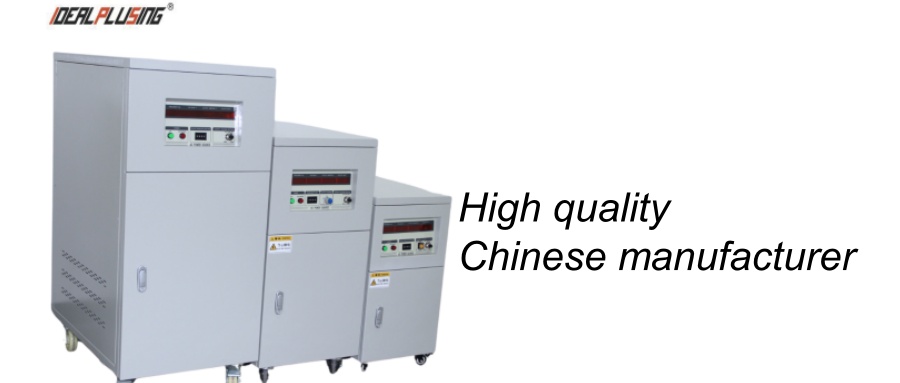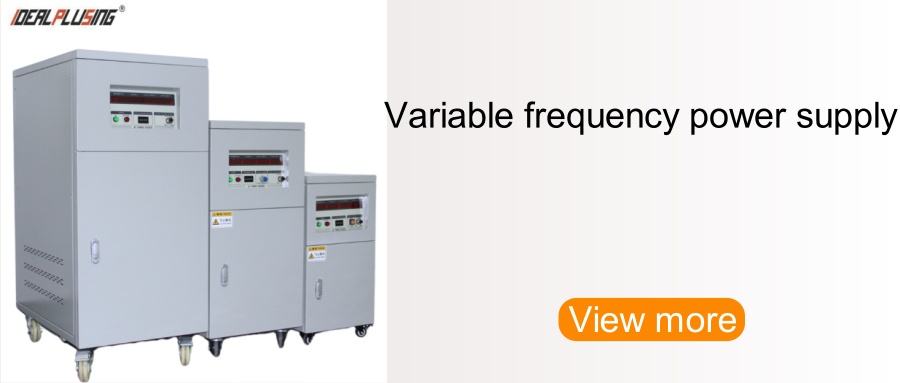What is a three phase frequency variable power supply and a single phase frequency variable power supply and what is the difference between them?
Electrical term refers to the current or voltage of the connecting wire and the neutral wire. Power systems are generally divided into two categories: single-phase power and three-phase power. Both power systems use alternating current. Phase variable frequency power supplies are generally used to drive high loads in industrial and commercial environments, while single phase variable frequency power supplies are widely used in household appliances and appliances.
What is single phase variable frequency power supply:

A single-phase variable frequency power supply distributes alternating current power through a system that varies the supply voltage uniformly across all supplies. Typically, a single-phase AC power system consists of two wires called a phase wire (live wire/wire) and a neutral wire. The single phase voltage for both is 220V and the frequency is 50Hz.
Single-phase variable frequency power supplies are the most common and widely used home electrical appliances to power lights, televisions, and other small appliances such as fans, coolers, heaters, and small air conditioners.
Single-phase loads can be supplied from three-phase distribution transformers in two ways. Connection between single phase and neutral, or between two phases, both supplying voltages from the supplied power supply (e.g. 220/380). Three-phase system, phase voltage is 220 V and line voltage is 380 V. This allows single-phase lamps to be connected to neutral and three-phase motors to all three phases, eliminating the need for a transformer with one separate phase.
The three-phase variable frequency power supply is:
Three-phase power is a method of transmitting and distributing AC power and is the most common method of power transmission on electrical grids worldwide. There are four conductors in total: three live conductors and one neutral conductor. Neutral wire The connection is the part of the live wire.
Compared to three-phase systems, they have many advantages, such as requiring fewer wires and providing load capacity, and three-phase efficiency and low loss.
A three-phase system provides three-phase power of equal amplitude and frequency. It provides uninterruptible power, i.e. if one part of the system is faulted, the other two parts of the system continue to provide power. Its magnitude is current. The current in one phase is equal to the current in the other two phases of the system.
The voltage between the phases of a three-phase variable frequency power supply is 380V and the voltage between the phases and neutral is 220V, so a three-phase variable frequency power supply can be used to provide three single-phase variable frequency power supplies. It is usually supplied to transporters for domestic and small business use.
Comparison basis | Single phase | Three phase |
Description | In single-phase power, power is supplied through a single conductor. | In three-phase power, the power passes through three conductors. |
Type | There is only one type of single-phase configuration. | There are two types of three-phase configurations: star and triangle. |
Wave period | Single-phase power has one distinct wave cycle. | Three-phase power has three different wave cycles. |
Voltage | The voltage of a single phase is 220V. | The voltage of three phases is 380V. |
System failure | Single-phase systems have only one phase wire, and in case of a network failure, the power supply fails completely. | In a three-phase system, if any of the phases fails, the other two phases will continue to supply power. |
Application | Single-phase power is mainly used to run appliances with small loads in the home, such as lights, dryers, heaters, and low-power motors. | Three-phase power is used in large industries and to run heavy loads. |
Complexity | Single-phase has two wires, one phase and one neutral; this makes the grid simple. | A three-phase grid is a complex circuit consisting of four wires, three phase wires, and a neutral wire to complete the circuit. |
Power transmission capacity | Single-phase power transmission capacity is minimal. | Three-phase power transmission capacity is the largest. |
Efficiency | For an equivalent circuit, single-phase power is less efficient than three-phase power. | For an equivalent circuit, three-phase power is more efficient than single-phase power. |
Power fluctuation | The power provided by a single-phase system fluctuates as it reaches zero three times per cycle. | In a three-phase system, the power fluctuates but never reaches zero. |
Power loss | It is not possible to transmit more power through single phase without losses. | More power can be transmitted without loss through three phases. |
Output | Single phase system has less output compared to three phase system. | Three phase systems have more output compared to single phase. |






